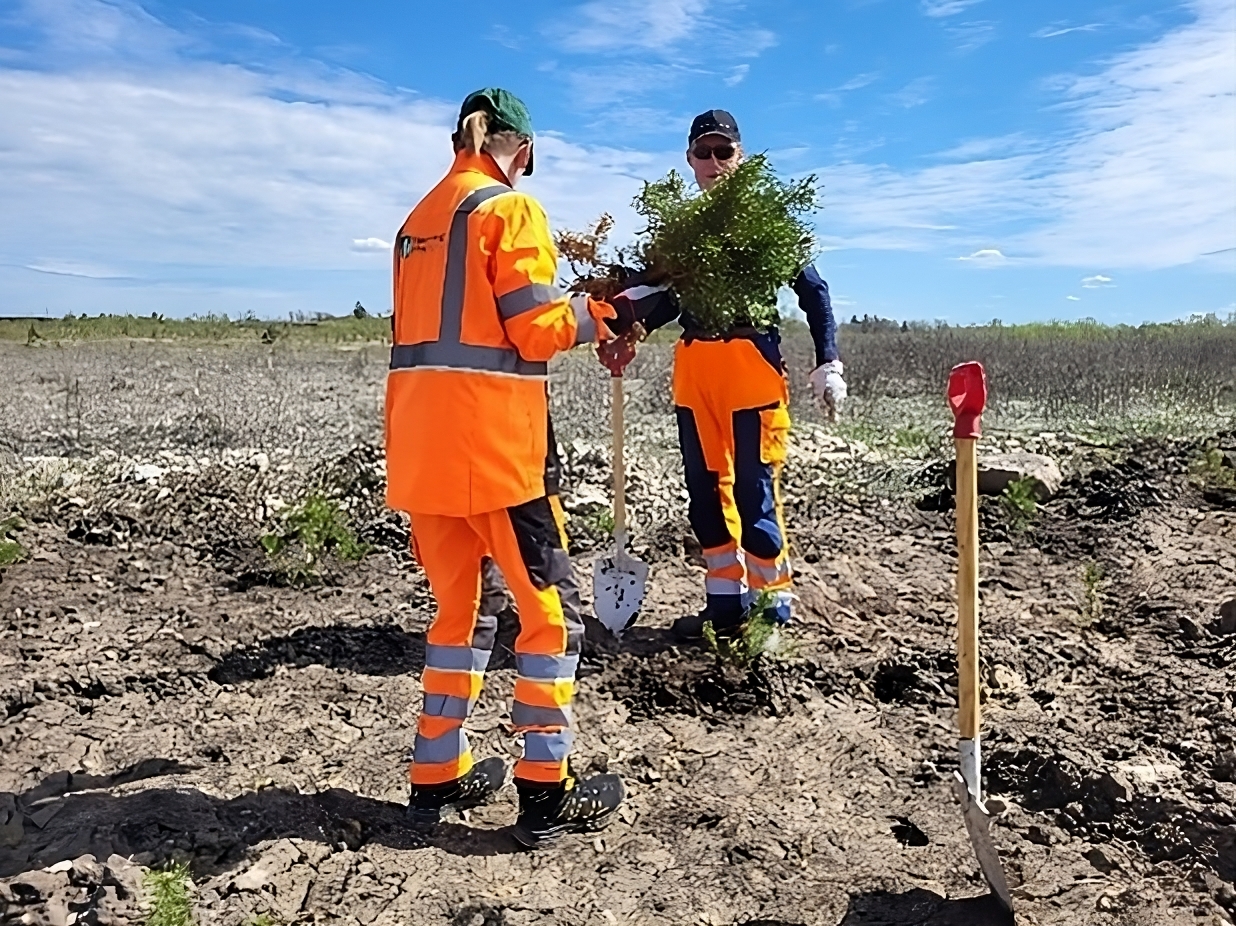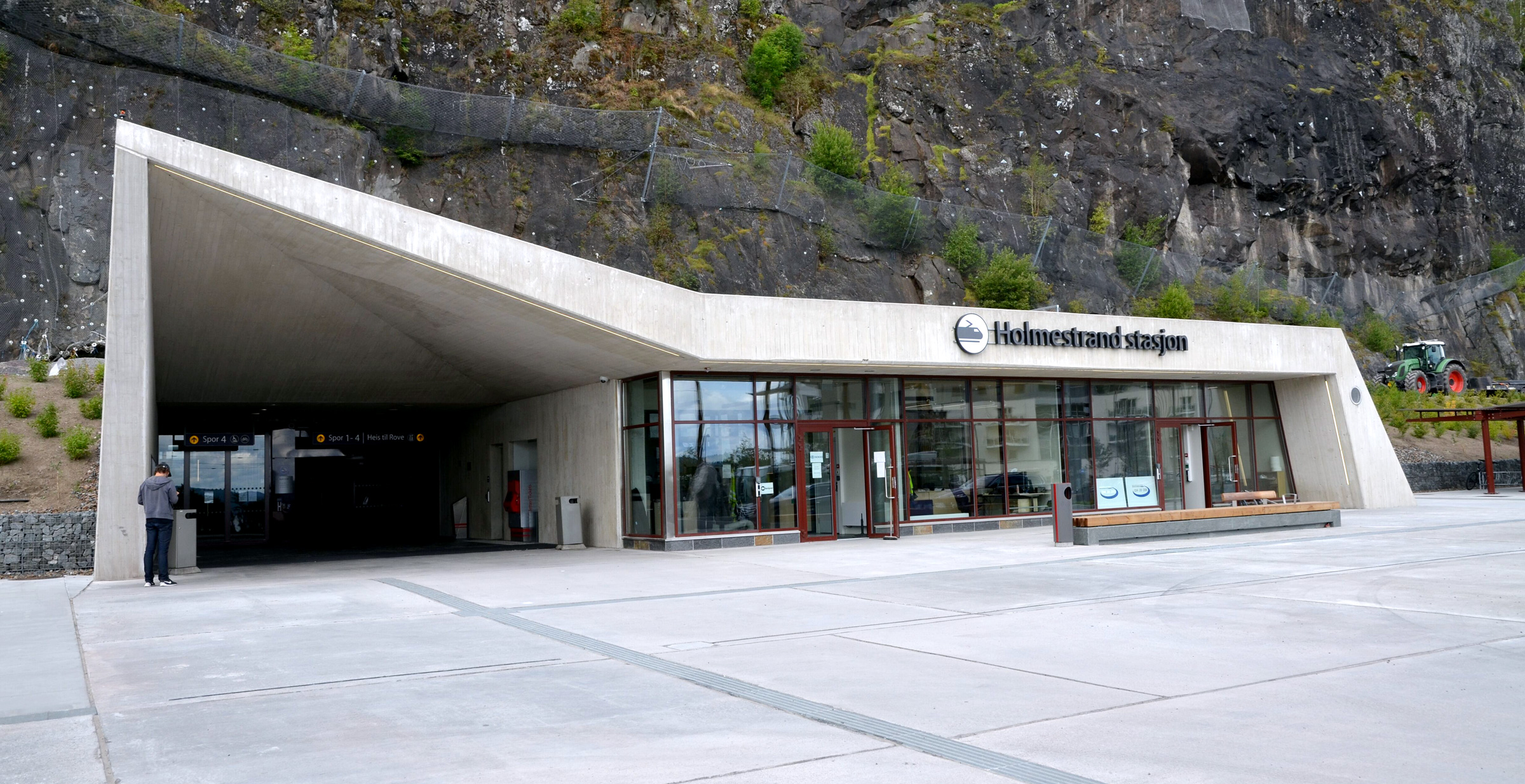Voluntary work in Estonia: 2000 birch and pine seedlings planted in Ubja quarry
Since 2012, approximately 55 hectares of mined land have been restored and reforested.
Every spring, Heidelberg Materials Kunda collaborates with local village volunteers, partners, and its own employees to organize tree planting events aimed at reforesting mined and restored areas. This May, the event saw active participation from the company's staff, Ubja villagers, and various partners, resulting in the planting of approximately 2000 birch and pine seedlings.
“We adhere to the principle that mined areas can be immediately restored. Since 2012, we have restored and reforested about 55 hectares of mined land – the entire mined area,” says Riho Iskül, Director of Mining and Transportation at Heidelberg Materials Kunda, Estonia.
Planning and care needed for planting events and young plants
This year, Heidelberg Materials Kunda has planted approximately 20,000 plants altogether on the restored area of the oil shale quarry. Among these are 150-200 smaller pines transplanted from the company's Aru-Lõuna limestone quarry, where they were obstructing mining operations. "The seedlings planted this spring were ordered from our reliable partner, Haljastus- ja Metsatööde OÜ, already in winter due to high demand," explains Iskül.
Newly planted seedlings require diligent monitoring. For instance, in a particularly dry spring, they need occasional watering. "Most plants usually survive, but if necessary, we replace non-surviving plants during the following year's event," Iskül says. Additionally, young plants need protection from wildlife such as deer and moose, for which the pine seedlings have been treated with a special resin.
Guided by Biodiversity Management Plans
To foster biodiversity in the quarries, Heidelberg Materials Kunda adheres to a comprehensive restoration plan and Biodiversity Management Plans established in 2022. These plans advocate for a varied forest structure in quarries, incorporating open areas and introducing species beyond birch and pine. By following these guidelines, the restored area is poised to become a thriving habitat for wildlife, including bumblebees, reptiles, small mammals, and birds.
The tree planting tradition dates back 12 years
The tradition of tree planting in the Ubja oil shale quarry began in 2012, supported by Ubja village residents, company employees, and leaders from the group's cement plants in Norway and Sweden. Over the past twelve years, this initiative has resulted in the growth of a lush mixed forest on the formerly mined land.
“When mining concludes at the Ubja site, we will be able to return the restored and reforested area to the village residents in a nature-friendly form,” concludes Riho Iskül.
Facts
- Heidelberg Materials Kunda received permission to establish the Ubja oil shale mine in 2001.
- The mining area covers 152 hectares, of which 55 hectares have now been mined, restored, and reforested.
- Oil shale was supplied for fuelling the cement plant kilns until 2020. After clinker production ceased in Kunda cement plant, oil shale has been supplied to local energy company Eesti Energia to ensure the country's energy security during green transition period.

Tree planting event in Ubja oil shale quarry in May, 2024.

Tree planting event in Ubja oil shale quarry in May, 2024.

Tree planting event in Ubja oil shale quarry in May, 2024.

Tree planting event in Ubja oil shale quarry in May, 2024.

Tree planting event in Ubja oil shale quarry in May, 2024.

Tree planting event in Ubja oil shale quarry in May, 2024.

Tree planting event in Ubja oil shale quarry in May, 2024.

Tree planting event in Ubja oil shale quarry in May, 2024.

Tree planting event in Ubja oil shale quarry in May, 2024.

Tree planting event in Ubja oil shale quarry in May, 2024.


